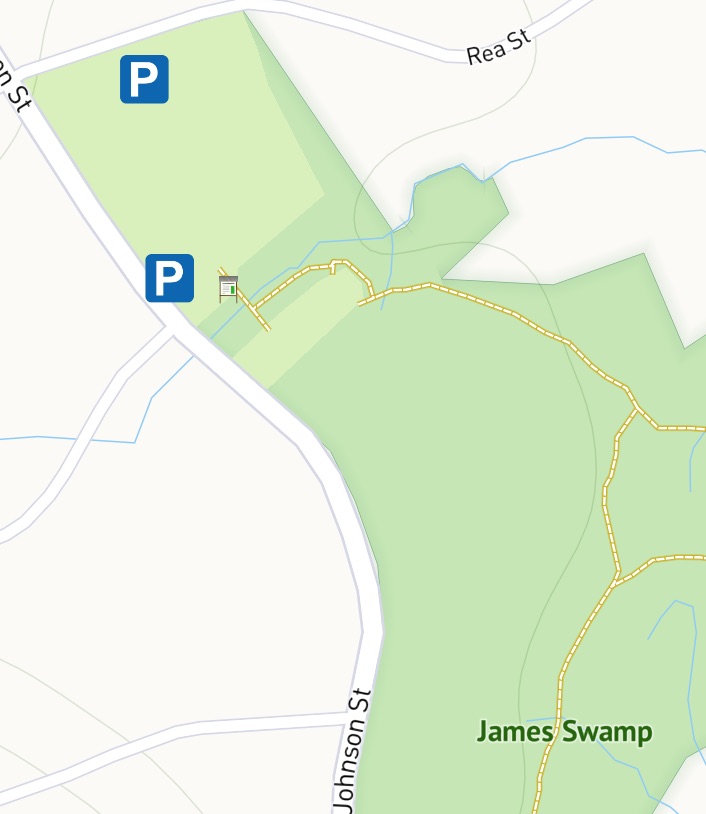JAMES SWAMP
Beginning at the footbridge over Mosquito Brook at Reynolds Field, a mile of trails traverse these woods and wetlands along Johnson St.
Begin at the trail kiosk, cross the footbridge over Mosquito Brook, and follow the trail along the left side of the far soccer field. The trail winds through uplands and wetlands, with access to Johnson St and Cricket Lane. A short loop trail will get you a closer look at the wetland.
Colored aluminum trail markers correspond to the trail colors shown on this map. There are seven bridges and boardwalks along the trails here, many of them Eagle Scout projects.
The Community Trail leaves the conservation area to join Cricket Lane via a six-foot-wide trail easement. Public access is permitted, but be sure to stay on the trail and respect the private property.
A GIFT OF OPEN SPACE
Fanny Reynolds donated this 48-acre parcel to the town in 1971 in honor of her husband Edwin Reynolds, for use as a playground and conservation land. The Reynolds Cider Mill, the red barn on Johnson Street, is also located on this parcel. The building and surrounding land was leased to an adjacent property owner prior to the donation of the land.
MOSQUITO BROOK
The stream crossing here at the footbridge is known as Mosquito Brook. Beginning at the wetland area behind the Stop & Shop plaza, the brook snakes through North Andover for about five miles, before meeting up with Fish Brook near the Boxford town line.
Along with Boston Brook, Mosquito Brook is part of the massive Ipswich River watershed. The water flowing under the bridge will meet up with the Ipswich River in Topsfield. From there, it will flow into the Atlantic Ocean at the mouth of Plum Island Sound. More information about the Ispwich River watershed can be found at ipswichriver.org.
Deer can often be seen throughout the woods here. Painted turtles and muskrat make their home in the swampy wetland, while the brook is home to minks and amphibians.



